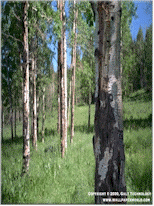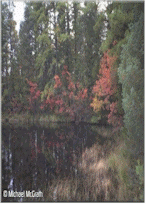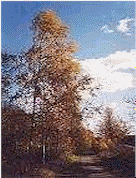|
Tree Care Here we will give the information
neccesary for taking care of trees that already exsist in
your landscape. we will also talk about when it is time for
a tree to be removed. |
|
|
Introduction |
A widely overlooked area of the landscape is the old existing tree in your front yard, or anywhere else. These plants ad tremendous beauty and value to your property, yet few people take the time to care for them until it is to late. Usually when people do try to take care of them they hire the first two guys with a chain saw to top the tree off. This is the worst thing a home owner or property manager could do. This practice will either weaken the tree further or kill it all together. I can't tell you what is wrong with that red oak in the back yard or the curbside Crimson Maple without looking at them. However, I can help with things that you should look for in your trees and how to help maintain their health and magnificence. The following are lists for what to watch out for, types of pruning, fertilizing, and how to choose people for this type of work. |
|
What to look out for
in those trees. |
Losing more than 40% of the trees foliage to early. (this can be the sign of disease, insects, stress, etc…) The die back of many limbs. (careful, this could be a trait of the tree) Discoloration of the leaves or bark. (some trees do this naturally as they mature) Spots on the leaves. (this is usually caused by disease) Holes in the truck of the trees. (this is a good indication of certain insects) Chewed up leaves. Bumps or raised areas on the leaf surface. (this could be disease or insects, like spider mites or certain kinds of flies) Cankers on the stems. (again this can be many different things) Rotten wood on anywhere on the tree. (at the crown, or base of the trunk can be very serious)
With all of the "could be's" in this area of the landscaping industry, I strongly recommend the hiring of professionals. I will go over how you do this later. |
|
Types of pruning
|
Removal of crossing or overlapping branches within the tree or between trees. Removal of rotten or diseased limbs Dead limb removal. (this can be a large safety issue) Thinning out. (this helps with air flow and sun light penetration) Faulty crotch removal or cabling. (this removes or helps support weak junctions between the limb and the trunk of the tree) Raising the canopy. (this practice makes the tree easy to pass under and also helps prevent some diseases)
Trees need pruned every so often and these are just some of the more common practices. |
|
Fertilizers |
Injectables are some of the best but should be done by professionals. Liquid fertilizers are also fast and effective but also should be done by professionals. Granular fertilizers are like the ones for your lawn but they go under ground. Fertilizer sticks for trees are like the plant food sticks for your house plants, just a lot bigger.
All, but the injection types, fertilizers should be placed in the ground at the drip line unless specified differently. The drip line is the are of ground directly below the tips of the branches above. This is where the most up take occurs in the roots. |
|
The Final Word |
I strongly recommend that you hire this work out to professionals. When you decide call about estimates, call a few tree service companies in your area, and make sure you get a free estimate. The only time you should pay for anything on a simple estimate is if a lab test would be required on a sample from the tree. When this occurs the results should be given to you and explained before you pay for them, but be careful there may not be anything wrong with the tree and you will still have to pay for it. Now you need know how to select the right person for the job. Here are some pointers to help you tell if they are qualified;
If they only look at the tree from a distance and for a few seconds and determine that it needs to be cut down there just after some money. WATCH OUT If they want to top the tree, you don't want them around to do the work. This will be explained later. They should tell you exactly what they will be doing and why. They should be able to tell a lot of the diseases on-site. And if they cannot they should be able to get back to soon. Some diseases can only be diagnosed in a lab. These are the diseases that have very common signs like the dying of branches. They should also be able to determine insects and many of their damages. Ask if they are certified and insured.
Only in the worst cases should you cut the tree down. Most problems can be controlled or corrected. With this in mind, get a few different opinions and go with the most knowledgeable company. Should all the companies say the tree needs removed make them explain why in detail. In my experience most trees have had little need for major work, this is why an explanation of what they do is necessary. Topping trees is also another big mistake of people that do not know what they are doing. The topped tree sends out branches as fast as it can. These branches are called water suckers because of the vast amount of water they hold within them. Their growth rate is extremely fast and they never get a strong fibrous wood heart to them. This means that if the tree even survives the new limbs are worse than the old ones. They break very easy and the tree never regains it's natural habit of growth. ISA will take you to the International Society of Arboriculture |



